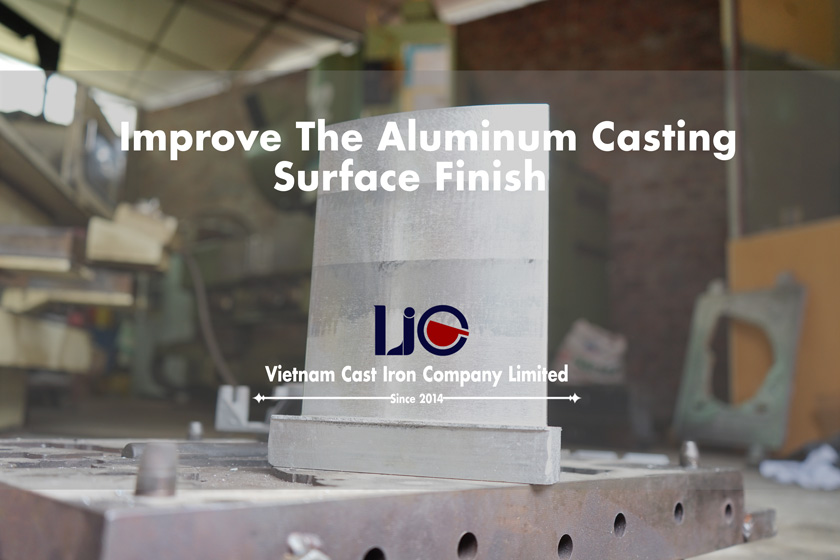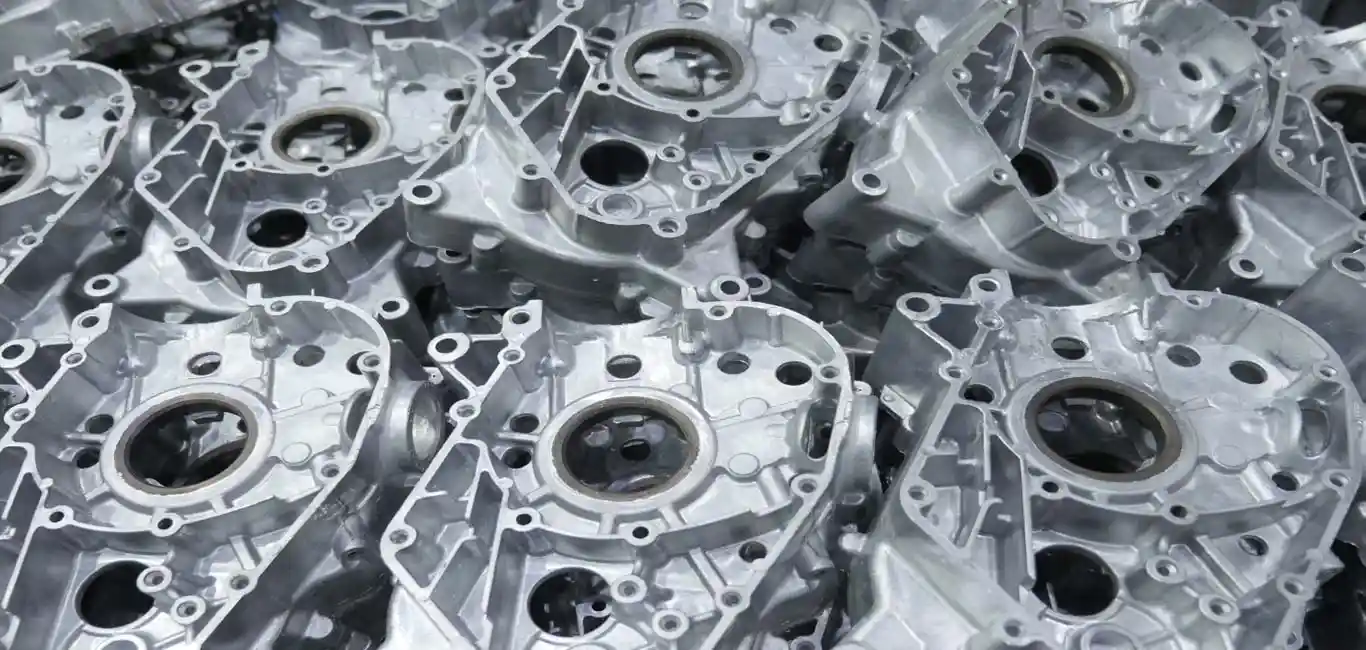A comprehensive overview to Aluminum Casting processes
A Comprehensive Guide to the Various Kinds and Applications of Aluminum Castings
Aluminum castings are crucial parts in numerous sectors, understood for their lightweight and durable residential properties. Various casting approaches, such as sand, die, and investment casting, deal distinctive benefits tailored to details applications. Recognizing these processes is vital for choosing the right technique for a project. Each strategy has its distinct advantages, affecting layout and manufacturing choices. The expedition of these approaches reveals a deeper understanding right into their impact on contemporary manufacturing.
Overview of Aluminum Castings
Aluminum castings are crucial parts in numerous sectors, known for their lightweight and corrosion-resistant residential properties. These castings are created with processes that enable intricate styles and high dimensional precision. The adaptability of aluminum makes it an optimal selection for a variety of applications, from auto parts to customer electronic devices. Because of its superb thermal and electrical conductivity, aluminum is likewise preferred in electrical housings and warm sinks. In addition, aluminum castings can be treated with different surface area coatings, enhancing their aesthetic allure and resilience. The product's recyclability includes in its sustainability credentials, making it an eco-friendly option. In addition, the availability of different aluminum alloys enables suppliers to customize the mechanical residential properties to details needs, providing enhanced stamina or boosted resistance to put on. Overall, aluminum castings play a significant function in contemporary manufacturing, contributing to the effectiveness and efficiency of various products throughout varied sectors.
Sand Casting: Refine and Applications
While different casting techniques exist, sand casting remains among the most extensively used techniques as a result of its simplicity and versatility. This procedure entails producing a mold and mildew from a blend of sand and a binding agent, enabling the production of intricate forms with high dimensional accuracy. The aluminum is thawed and put into the mold, where it takes the desired kind as it cools down and strengthens.
Sand casting is especially effective for creating large parts and low to medium volume runs, making it ideal for different markets, including auto, aerospace, and customer products. Its flexibility permits the casting of elaborate designs, accommodating diverse specifications. In addition, sand mold and mildews can be recycled numerous times, enhancing cost-effectiveness. The simplicity of sourcing products and the fairly reduced setup expenses additionally contribute to its widespread fostering. Generally, sand casting plays a critical role in the aluminum casting landscape, promoting development and performance.
Die Casting: Advantages and Makes use of
Die casting offers numerous benefits that make it a favored approach for creating aluminum parts in various sectors. This process permits for high-volume production with remarkable dimensional precision and surface coating. The rapid solidification of aluminum during die casting causes a solid and long lasting item, lessening the demand for comprehensive machining or ending up processes.
In addition, die casting makes it possible for the production of complicated forms and elaborate styles, which can be testing to achieve with other casting approaches. The effective use of materials minimizes waste, making it a cost-effective option for manufacturers.
Applications of die casting span different markets, consisting of auto, aerospace, and consumer electronic devices, where light-weight and high-strength parts are vital. In general, die casting attracts attention for its ability to provide quality, effectiveness, and convenience in aluminum part manufacturing, strengthening its duty in modern-day production practices.
Investment Casting: Precision and Detail
Financial investment casting is an accuracy production procedure that permits elaborate styles and detailed features in aluminum elements (Aluminum Casting). This method provides various advantages, including high dimensional precision and a smooth surface area finish. Its convenience makes it suitable across numerous industries, from aerospace to medical gadgets
Process Summary
The financial investment casting procedure stands out for its capacity to produce intricate aluminum parts with impressive accuracy and detail. This method starts with developing a wax or polymer pattern that is a reproduction of the preferred part. Next, the pattern is coated with a ceramic covering, which is after that heated to set. When the shell is established, the wax is dissolved, leaving a dental caries in the covering. Liquid aluminum is put right into this cavity, loading it to create the final component. After cooling down, the ceramic covering is escaped, exposing the actors component. This procedure permits complicated geometries and great surface area coatings, making it suitable for different applications, from aerospace to vehicle markets.
Benefits of Investment Casting
Among the main benefits of investment casting depends on its capability to supply high-precision elements with intricate information. This method permits the creation of intricate geometries that are usually unattainable with various other casting methods. Financial investment casting lessens the need for considerable machining, lowering product waste and manufacturing time. Additionally, it allows using various aluminum alloys, enhancing the adaptability of the final item. The procedure is characterized by a smooth surface area coating, which can result in boosted functionality and aesthetics. Additionally, financial investment casting is well-suited for both little and huge production runs, suiting a vast array of markets. Overall, its precision and effectiveness make financial investment casting a recommended selection for manufacturing components needing exact requirements.
Applications in Sector
While various casting techniques offer specific functions, financial investment casting attracts attention for its extensive applications across several markets because of its unequaled precision and information. This method is specifically preferred in aerospace and automotive markets, where intricate elements call for specific specifications for safety and performance. Financial investment casting enables the production of complex shapes, such as generator blades and engine components, that conventional approaches can not attain. Furthermore, medical device suppliers utilize investment casting for developing extremely comprehensive tools and implants, making certain biocompatibility and performance. The electrical and electronic devices markets also profit, creating parts like real estates and ports that demand great tolerances. On the whole, financial investment casting's versatility and precision make it a vital procedure in contemporary production throughout diverse fields.
Comparison of Casting Techniques

Sand Casting Advantages
Sand casting provides numerous benefits over other casting methods, particularly when it pertains to versatility and cost-effectiveness. This strategy permits the manufacturing of intricate shapes and big parts without the need for expensive tooling. Additionally, the sand utilized in this process is easily offered and economical, making it an eye-catching option for both small and big manufacturing runs. The capacity to reuse sand advertises sustainability and decreases material expenses. Additionally, sand casting suits a variety of aluminum alloys, improving click to investigate its versatility for various applications. The procedure is additionally reasonably straightforward, which adds to much shorter preparations and adaptability in production. These variables make sand casting a recommended option for lots of markets seeking trusted and affordable options.
Die Casting Effectiveness
Although numerous casting approaches are offered, die casting stands apart for its effectiveness, specifically in high-volume production situations. This method employs high-pressure pressures to infuse liquified aluminum right into a mold and mildew, leading to quick cycle times and consistent item quality. Contrasted to sand casting and financial investment casting, pass away casting considerably lowers product waste and enables for intricate layouts with tight resistances. The ability to create huge amounts of components swiftly makes it excellent for markets such as automobile and durable goods. Additionally, pass away casting can facilitate using less costly alloys, better enhancing its cost-effectiveness. Generally, the efficiency of die casting makes it a favored selection for producers intending to optimize both manufacturing rate and quality.
Financial Investment Casting Precision
Financial investment casting is widely acknowledged for its outstanding precision in creating intricate shapes and complex details. This approach entails producing a wax pattern, which is coated in a ceramic covering, and subsequently disappeared, leaving a specific dental caries for liquified aluminum. Contrasted to other casting techniques, such as sand casting or die casting, investment click here for more info casting supplies tighter resistances and a smoother surface area coating. This precision makes it optimal for applications needing high precision, such as aerospace and clinical device elements. While the preliminary arrangement expenses may be greater, the lasting advantages include reduced machining requirements and constant top quality. Consequently, financial investment casting stands apart as a favored option for intricate designs and demanding requirements in numerous sectors.
Market Applications of Aluminum Castings
Aluminum castings play an important function across countless markets because of their lightweight, corrosion-resistant residential properties and exceptional strength-to-weight ratio. In the automotive market, aluminum castings are extensively used for engine elements, transmission housings, and architectural components, adding to fuel effectiveness and efficiency. The aerospace sector take advantage of aluminum castings in airplane structures, engine mounts, and indoor installations, where weight decrease is vital.
On top of that, the consumer electronics field makes use of aluminum castings for enclosures and elements, improving sturdiness while maintaining a streamlined visual. In the building market, aluminum castings are employed in architectural components, window structures, and structural assistances, offering strength against weathering. Moreover, the aquatic sector favors aluminum castings for watercraft hulls and fittings because of their resistance to deep sea corrosion. Overall, aluminum castings use functional solutions, satisfying varied needs across various applications while keeping high efficiency and dependability.

Future Fads in Aluminum Casting Modern Technology
As sectors remain to evolve, developments in aluminum casting modern technology are poised to improve making procedures and product layout. Emerging trends include the integration of automation and fabricated knowledge, simplifying manufacturing and boosting top quality control. 3D printing is likewise gaining grip, permitting more intricate geometries and minimized waste, thus advertising sustainability. Additionally, the advancement of high-performance alloys is increasing the applications of aluminum castings, allowing markets to fulfill extensive performance standards.
Another substantial fad is the boosting concentrate on recycling and the round economy, with developments intended at recycling aluminum scrap effectively. Industry gamers are additionally buying clever production strategies, incorporating IoT for real-time tracking and anticipating maintenance. Improvements in surface area therapy innovations are improving the durability and aesthetic appeal of aluminum castings. Collectively, these patterns represent a transformative period in aluminum casting, driving performance, sustainability, and advancement across numerous industries.
Frequently Asked Concerns
What Are the Ecological Effects of Aluminum Casting Processes?
The environmental impacts of aluminum casting processes include greenhouse gas discharges, power consumption, and waste generation. These factors contribute to air and water contamination, triggering the need for sustainable methods and enhanced resource administration in the industry.
Just How Can Aluminum Castings Be Recycled Effectively?
Effective recycling of aluminum castings entails accumulating scrap, removing impurities, and thawing the aluminum to see generate brand-new castings. This procedure conserves power, decreases waste, and decreases environmental impacts, promoting an extra lasting manufacturing cycle.
What Is the Normal Lifespan of Aluminum Castings?
The common life-span of aluminum castings differs significantly, typically long lasting in between 20 to 50 years depending on ecological variables, alloy composition, and application. Their resilience makes them ideal for various requiring industrial and architectural uses.
Exist Any Type Of Wellness Dangers Connected With Aluminum Casting?
Concerns concerning wellness risks linked with aluminum casting consist of prospective direct exposure to fumes and dirt. Long term breathing may lead to respiratory system issues, while skin get in touch with can create inflammation. Proper precaution are vital to minimize these risks.
How Do Aluminum Castings Compare to Various Other Products in Toughness?
Aluminum castings display a desirable strength-to-weight ratio contrasted to lots of materials, including steel and plastics (Aluminum Casting). They are lightweight yet solid, making them optimal for applications calling for resilience without extreme weight, such as vehicle and aerospace components